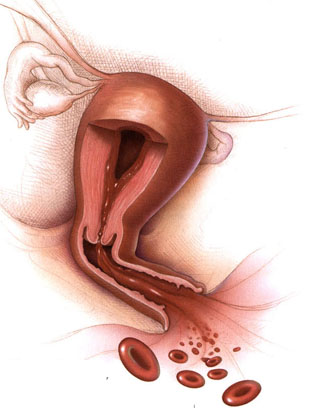Page Contents
OVERVIEW
This page is designed to organize content that is relevant to the topic of abnormal uterine bleeding (AUB). This term is used often in medicine, and it is important that we become as familiar as possible with it.

WHAT EXACTLY IS IT?
Before going any farther, let us make sure we clearly define our “medical problem”. AUB is a term whose usage can vary widely. Generally speaking AUB refers to menstrual bleeding of abnormal quantitiy, duration, or schedule. This can include (but is not limited to):
- Bleeding between periods
- Bleeding after sex
- Spotting anytime in the menstrual cycle
- Bleeding heavier or for more days than normal
- Bleeding after menopause
There are some specific subcategories of AUB that can have related (but also separate frameworks):
WHY IS IT A PROBLEM?
Abnormal bleeding of any kind (including AUB) can cause medical issues. Most clearly, symptomatic iron deficiency anemia can be a consequence of AUB.
Whats more, AUB can be the sign of a more serious underlying disease process.
ORGANIZING THE DIFFERENTIAL
The differential diagnosis for AUB can be organized in a few different ways:
FRAMEWORK
Is the patient pregnant? In all women who have not undergone menopause, a pregnancy test will be required for the evaluation of AUB.
What is the “life-stage” of the patient? The patient age will help inform how the AUB is contextualized. Here are some general categories to keep in mind:
- Young girls (before menarche): these patients will likely have AUB as a result of different causes (compared to other age groups). Trauma, foreign bodies, irritation, urinary tract problems are much more likely.
- Adolescents (around the time of menarche): abnormal bleeding patterns are common around the time of the first period. If the bleeding is especially heavy or if these abnormal patterns persist then more investigation is warranted.
- Premenopausal women: there can be many different causes of AUB in this patient population. With that in mind, the most common causes of such bleeding are uterine fibroids, uterine adenomyosis, or endometrial polyps.
- Menopausal women:
- Postmenopausal women (postmenopausal bleeding): all bleeding in postmenopausal women is abnormal, and all patients should receive an endometrial biopsy to rule out endometrial cancer.
What is the age of the patient? In thinking about evidence based medicine, age groups can be used to decide how aggressively patients should be worked up for AUB.
Is the bleeding cyclic or not? You may need to order a 21 day progesterone to try and figure this out.
- Non-cyclic bleeding suggests anovulation.
- Cyclic bleeding is a different category.
CLINICAL “WORKUP”
Now that the possible causes of abnormal uterine bleeding have been established, the focus can shift to how one would actually “work-up” a patient who presents with this complaint.
- Collecting the history
- Performing the physical
- Ordering studies/tests
- Interpreting clinical data
Page Updated: 10.13.2016